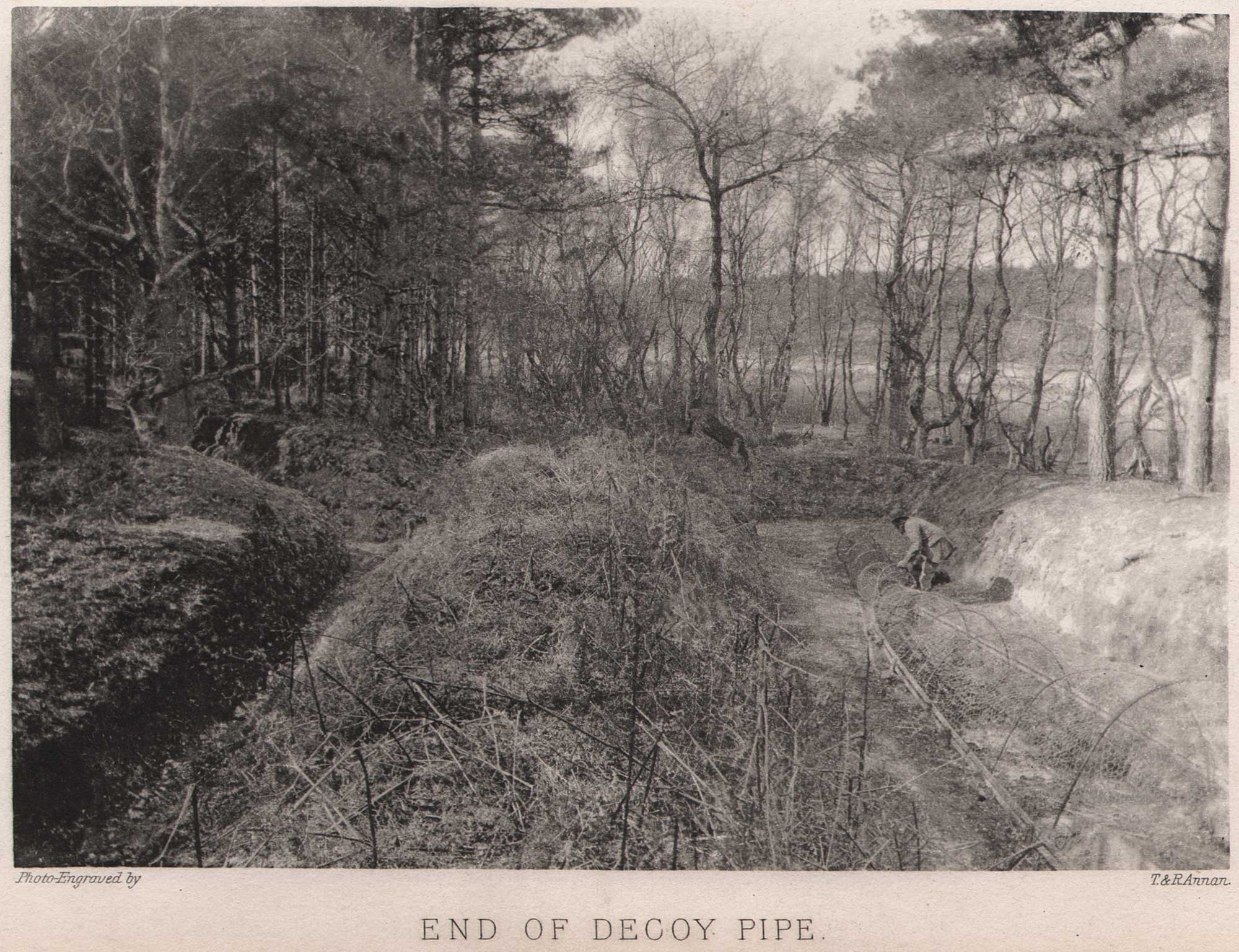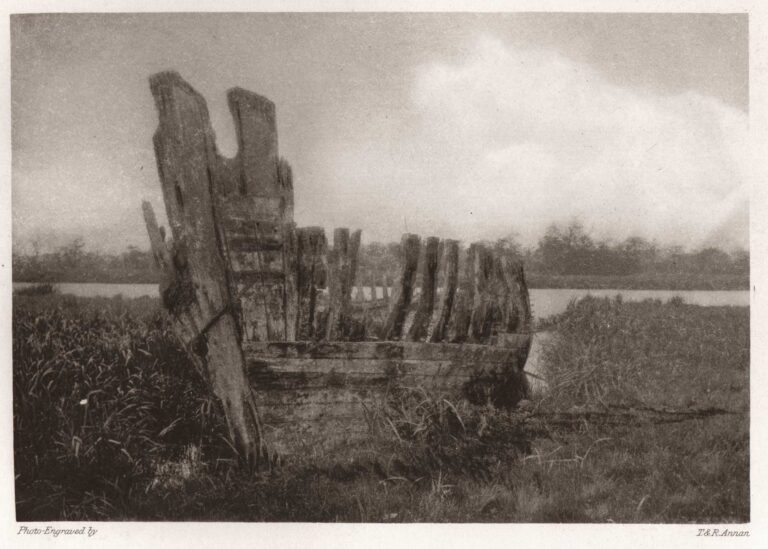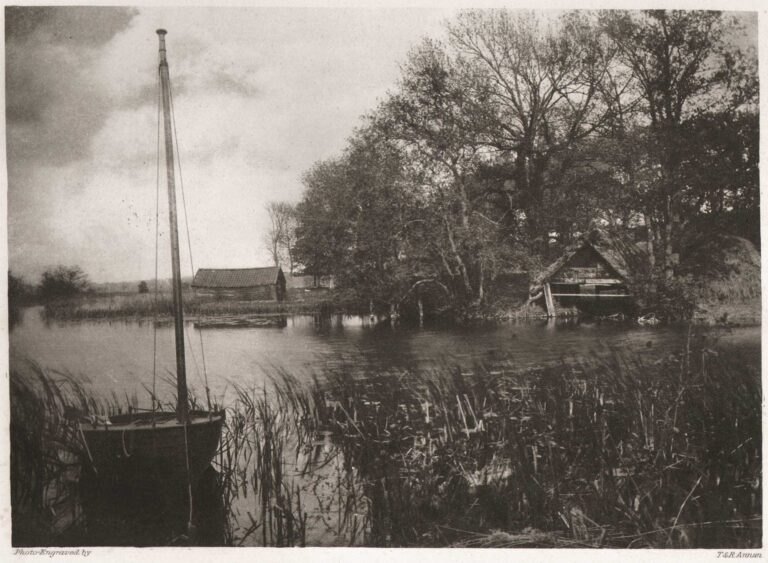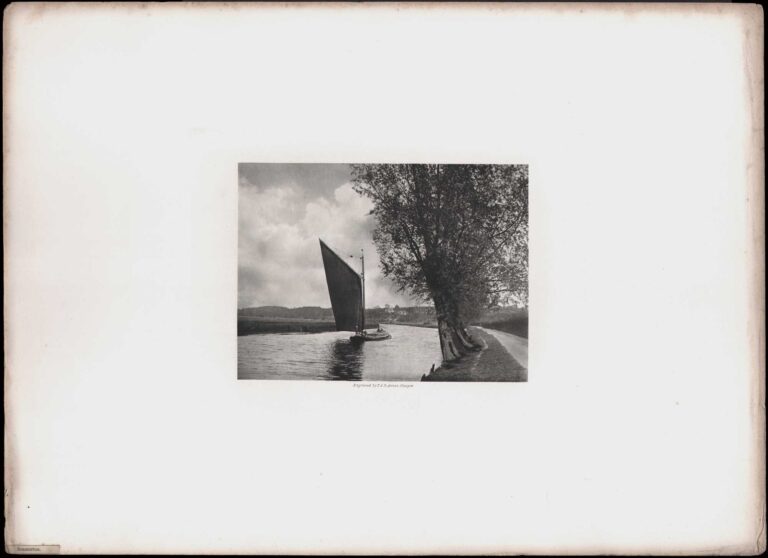
End of Decoy Pipe
“The keeper ran silently towards the mouth of the pipe, so as to get behind them; and then appearing at one of the openings between the screens, he waved his handkerchief, -a motion invisible to the ducks still outside the pipe, but a terrifying sight to those within. In an instant they rose and flew up the pipe in a panic, the man following them up and waving his handkerchief at each opening. As the pipe grew narrower, the doomed birds struggled along, half flying, half running. Only one dared to turn back and fly out of the pipe, regaining safety by its boldness. The others crowded through into the tunnel net; and when all were in, the keeper detached the first hoop from the grooves, gave it a twist, and so secured the ducks.” ⎯ G. Christopher Davies, 1883 (1.)
A gamekeeper works at the end of a purpose-built wildfowl decoy, constructed principally to capture wild ducks as a food source, seen here in the Norfolk village of Fritton.
Wikipedia states “A duck decoy is a device to capture wild ducks or other species of waterfowl. Decoys had an advantage over hunting ducks with shotguns as the duck meat did not contain lead shot. Consequently, a higher price could be charged for it.”
George Christopher Davies: 1849-1922
Davies was “a prolific photographer and writer who played an important role in encouraging popular awareness of the Norfolk Broads.” (1.) The following biography of the artist courtesy: Norfolk Through a Lens: A guide to the Photographic Collections held by Norfolk Library & Information Service –
Born in Shropshire, Davies practised as a solicitor for a time; he first came to Norfolk in 1871 to serve part of his articles. He was later to become Chief Clerk at Norfolk County Council in 1906, also serving as Clerk of the Peace. In his private life he was a nature lover, sportsman and photographer. His skills as a writer did much to popularise the Norfolk Broads as a rural idyll and holiday destination. When he was 27 he wrote ‘The Swan and her Crew’ an adventure story for boys set in the Norfolk Broads which created a great interest and enthusiasm for the area. His major work ‘Handbook to the Rivers and Broads of Norfolk and Suffolk’ was published in 55 editions and contained 12 of his own photographs. Davies also produced other books about the Broads, sailing, Belgian waterways, natural history, fishing, adventure books for children and even some on government administration. Towards the end of his life he acquired Burnt Fen Broad and spent many hours there during his retirement.
- Excerpt, G. Christopher Davies: Norfolk Broads and Rivers: Or, The Water-ways, Lagoons, and Decoys of East Anglia, William Blackwood & Son, Edinburgh and London, p. 151
- George Christopher Davies: Wikipedia: accessed September, 2025



